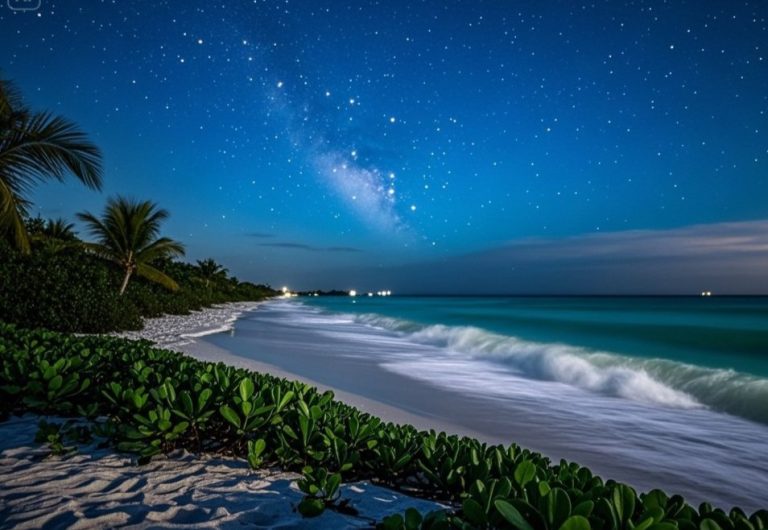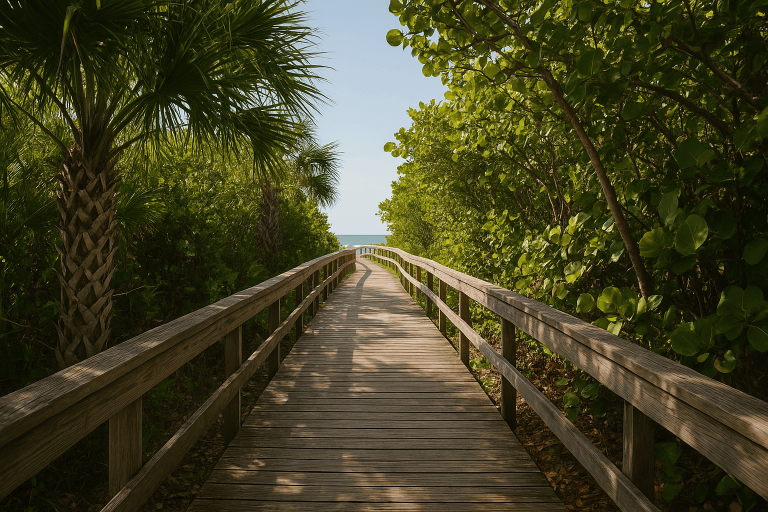From the shimmer on shells to the silhouette of a bird, see Sanibel in a whole new way…
Sanibel light, a soft gold like slow music. According to Rivera, “Shoot Sanibel slowly.” “Patience reveals hidden stories.” Source.
According to Rivera, “Shoot Sanibel slowly.” “Patience reveals hidden stories.” Source. I first saw dawn; less glare shows more. It helps photographers and dreamers—read on.
The Light That Dances on Sanibel’s Sand
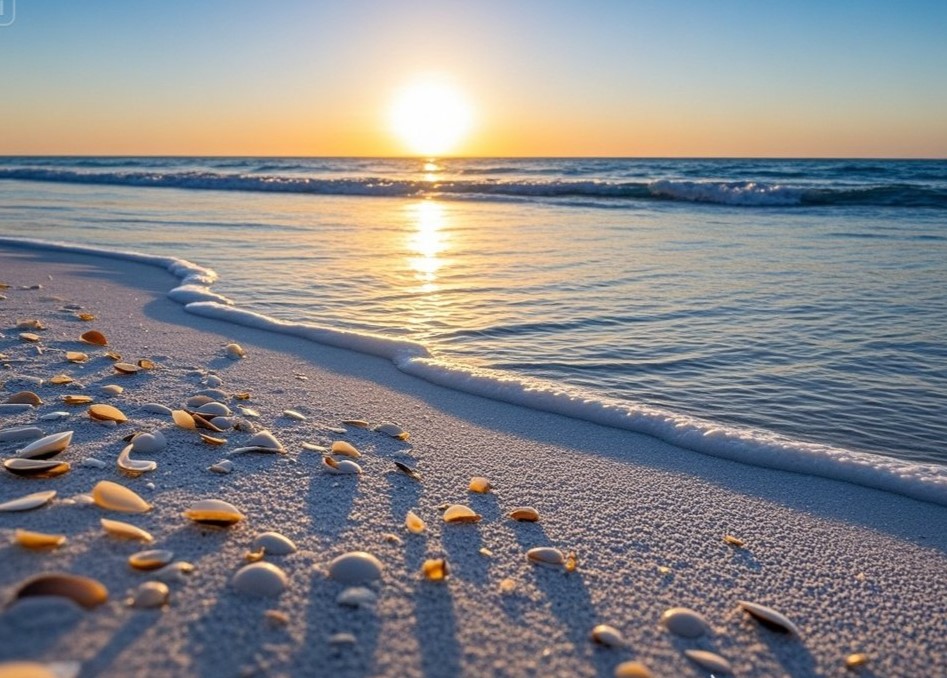
Morning light in Sanibel isn’t just bright — it breathes. It comes slowly, softly, then dances on sand still damp from last night’s tide. From afar, the beach looks like a golden canvas shifting hues from amber to milky white, then to a pale, sleepy blue. Each tiny sparkle feels like the sea’s quiet hello. Sometimes you catch a shell shining like glass; sometimes, only the faint trail of a passing bird.
There’s something calm about how the light moves here. It never rushes. It simply bounces, swirls, then fades a gentle reminder that beauty doesn’t need to shout to make us stop and stare.
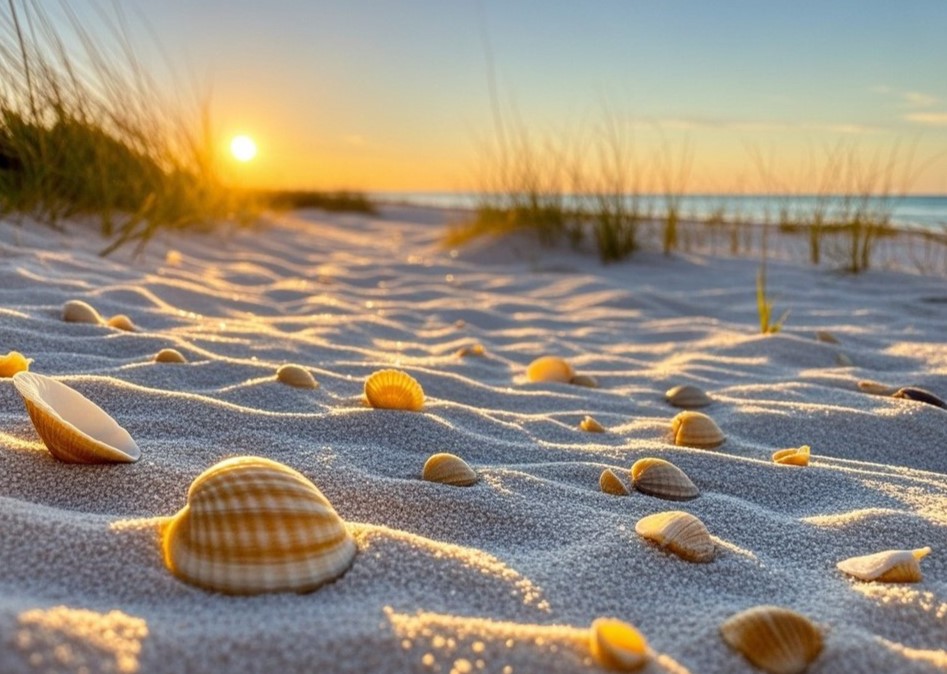
Unique Facts & Short Stories:
- Golden Hour — Between 6:00–7:00 a.m., Sanibel’s sand glows like real gold.
- Shell Glow — Shells reflect light like tiny prisms, scattering soft rainbow hues.
- Color Shift — The sea changes three times a day: pale blue, clear turquoise, then gentle green.
- Magic Moment — Every photo looks different, depending on light and timing.
Want to capture that glow yourself?
Turn off your flash and let the light do the work. Find a side angle where sunlight hits softly, then crouch low — that’s where the shimmer lives. Don’t mind the sand; down there, beauty finally reveals itself.
Sanibel’s Secret Lens: What the Camera Sees but Eyes Don’t
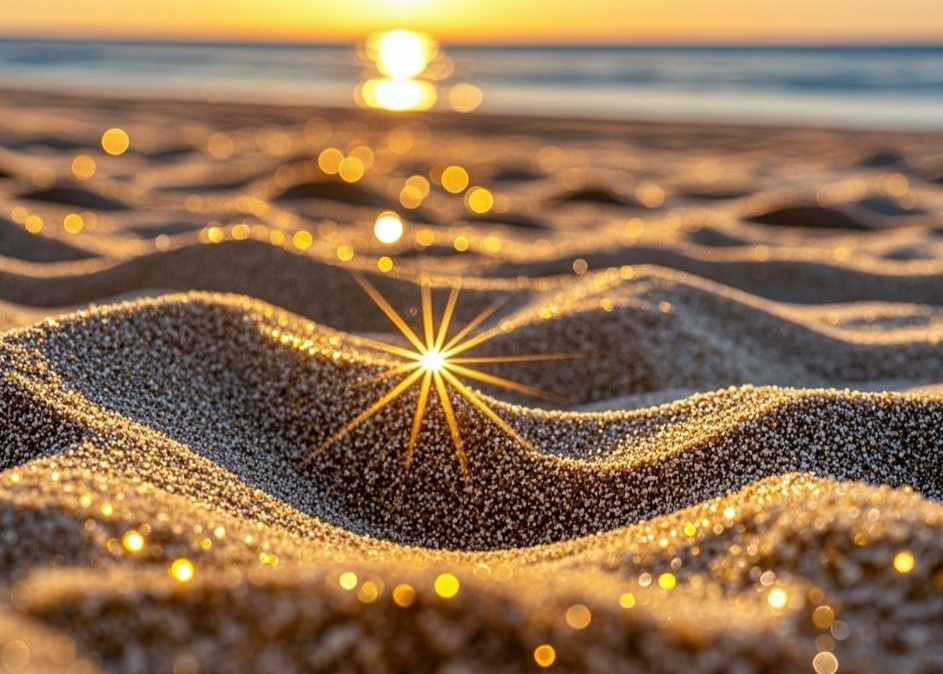
With a macro lens, the small world on Sanibel Beach turns into another universe, sand becomes stars, and water becomes sky. Every grain of salt, every tiny shell, reflects light in its own unique way, never the same twice. Here, the camera sees what the eyes often miss: the soft shimmer of seawater, the delicate texture of shells, and shadows that live only for a heartbeat before fading with the waves.
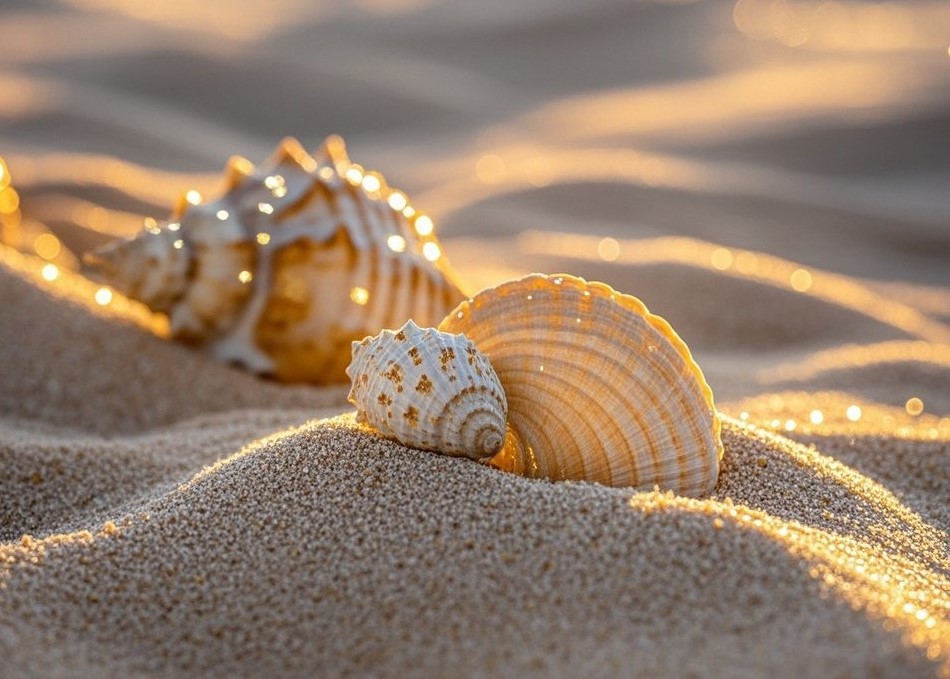
Try lowering your camera until it’s level with the sand, then switch to manual focus to bring out every tiny detail. Let the light come from the side — not the front — to capture a soft, natural shimmer.
Photo Mood & Object Guide — Sanibel Beach
| Location | Interesting Object | Mood or Effect |
| Shallow Water Edge | Sand grains & foam bubbles | Natural bokeh, gentle sparkle like stars on the surface |
| Shell-Rich Sandy Area | Small shell surfaces | Pastel macro texture, perfect for artistic close-ups |
| Near Beach Grass | Dew drops on leaf tips | Calm, cool “morning dew” atmosphere |
| Small Coral Rocks | Shimmer of saltwater on coral | Dramatic, high-contrast mood |
| Bird Footprints in Sand | Tracks and soft shadows | Poetic, minimalist photo style |
Sanibel Reflections: When the Sea Becomes the Sky’s Mirror

In Sanibel, the sea isn’t just moving water, it’s a vast mirror reflecting the sky, the clouds, and everything that drifts above. When the wind stills and the waves fall silent, its surface turns smooth as glass, revealing reflections almost too perfect to be real. In those moments, the line between sky and sea disappears, making anyone with a camera feel as if they’re standing between two worlds.
The reflections shift as time passes. Toward evening, the light softens, and the colors of the sky blend into shades of peach and silvery blue. Every shadow on the water moves slowly like a human step, a low-flying bird, or the gentle sway of a palm branch. Everything seems like a quiet dance.
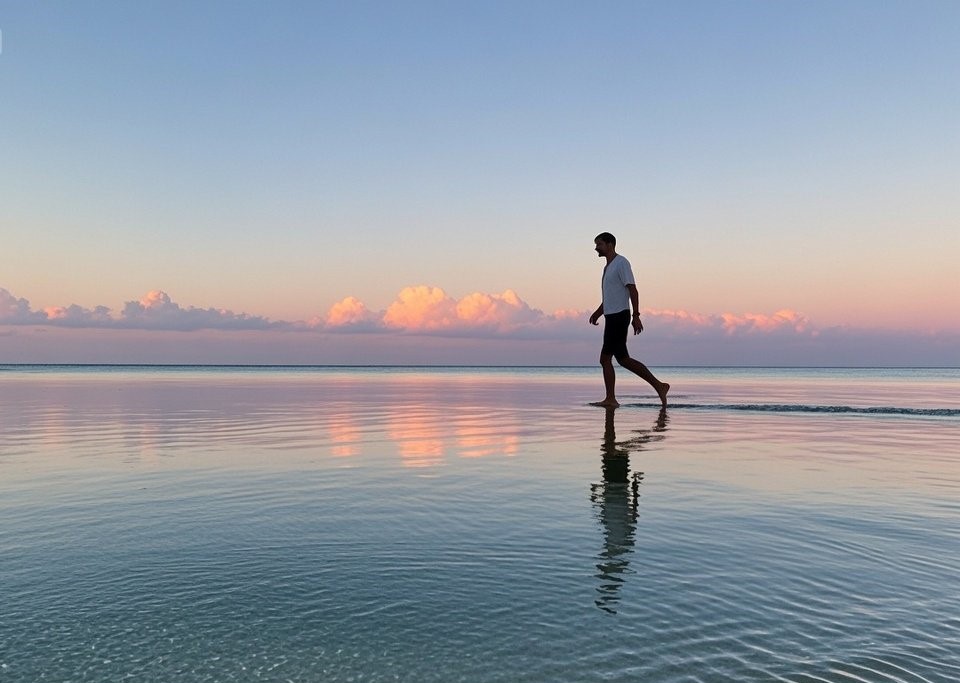
For photographers, this moment is called the mirror hour, a brief time when the sea truly turns to glass. Many wait for these few seconds just for one perfect shot, when the sun hangs low, the sky glows softly, and Sanibel’s beach becomes a place of reflection, not only for the camera but for the heart.
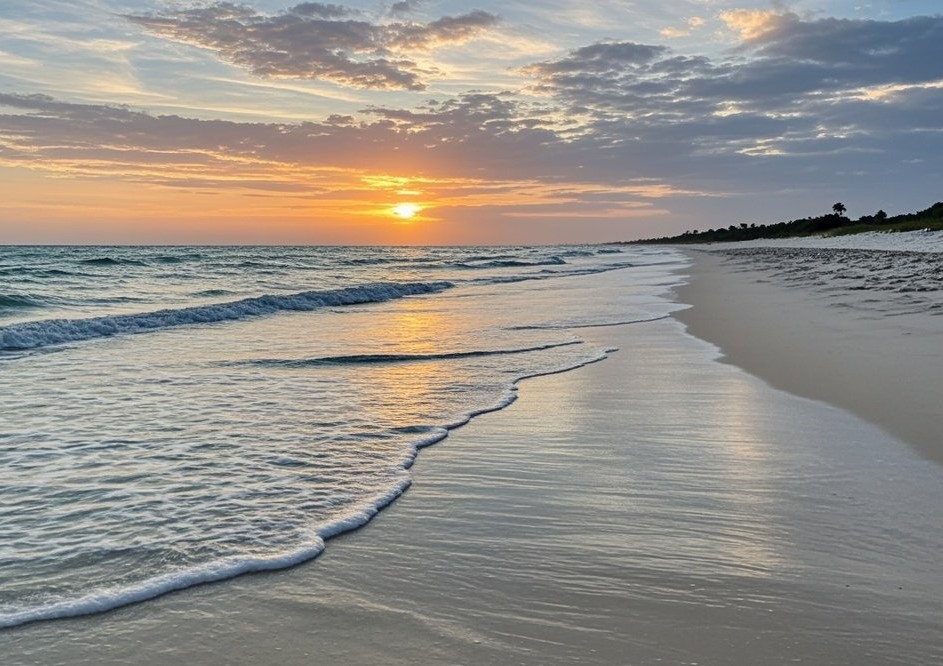
Fun Facts:
- The mirror hour happens between 5:00–6:00 PM, when the waves are calmest and the light begins to fade.
- Sanibel’s gentle shoreline and soft white sand create a crystal-clear reflection — as if the sea itself stops breathing.
- Many photographers shoot from a low angle, almost level with the sand, to capture the illusion of perfect symmetry between sky and sea.
Try using portrait or manual focus mode, then look for thin pools left behind by the tide. Shoot with the light, not against it, to get that soft, natural gradient reflection.
Conclusion: When Light Touches the Soul
It’s not the camera that makes a picture beautiful — it’s the heart that knows when to press the button. Sanibel isn’t just a place to be photographed — it’s a place to be felt. In every shimmer of water, in every footprint on the sand, there’s a light that reminds us: the truest beauty is often the simplest.

Simple Tips:
- Use natural light, not flash.
- Shoot from a low angle for a dramatic effect.
- Focus on small details — grains of sand, shadows, or reflections on the water.
Come see it for yourself — visit Sanibel and let the light tell its story.
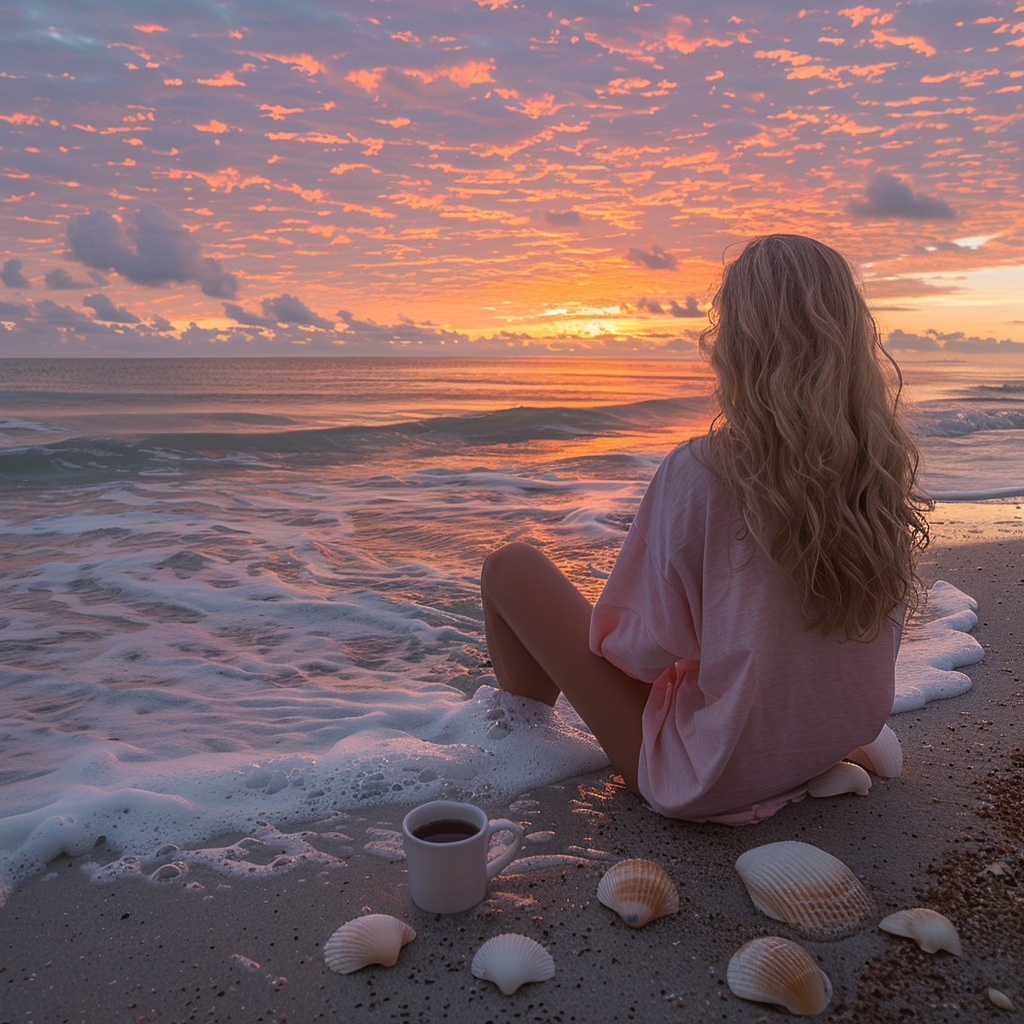
I’m Ayla Wolesky, and I’ve spent years exploring every corner of Sanibel Island. From its pristine beaches to the hidden gems only locals know about, I’m passionate about sharing everything this beautiful island has to offer. Whether it’s the best spots for shelling, the wildlife that makes Sanibel so special, or where to enjoy a perfect sunset, I’ve got you covered. My goal is to provide insider tips and up-to-date information that will help you experience Sanibel Island like never before.



